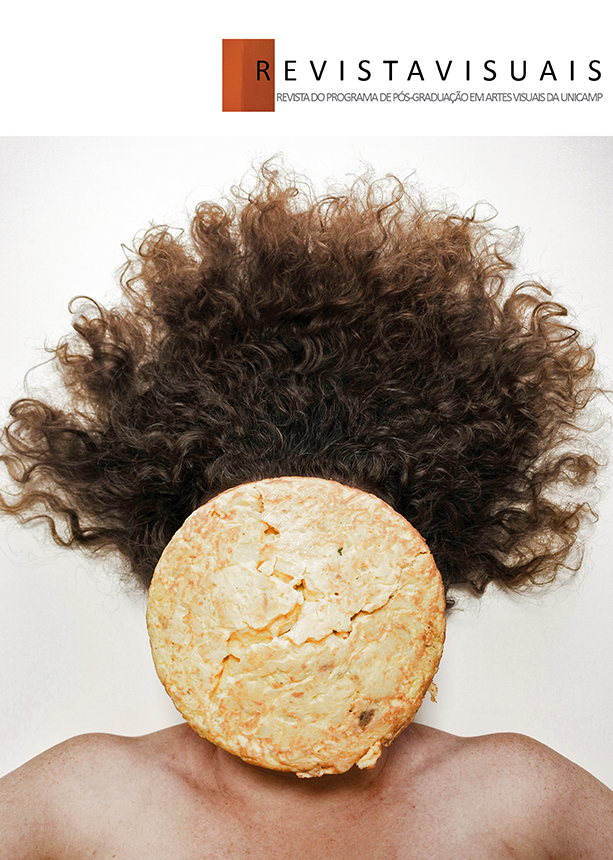Resumen
Roland Barthes fue autor de uno de los libros de fotografía más leídos a nivel mundial, Camera Lucida: A Note on Photography, publicado póstumamente en 1980. Desde entonces, ha suscitado diversos debates entre quienes encuentran en el autor un campo fértil de análisis y quienes buscan cuestionar sus ideas. Si bien el resultado más debatido de este libro es la institución de un noema fotográfico, lo que fue, mi interés reside en considerar otros dos elementos que acompañan la escritura de Barthes: el duelo y Τύχη (Tyque). El duelo, originado con la muerte de su madre, es clave para comprender la forma en que el autor elucida la fotografía y su conexión con la realidad a partir del Tyque, dada por la necesidad de reencontrar a su madre en la imagen fotográfica. Esta imagen persistente, que nunca conoceremos, estaba al alcance de Barthes en su escritorio y es responsable de su proyecto de rehabilitar la figura de su madre, un intento de mantenerla viva para sí mismo.
Referencias
BARTHES, R. A câmara Clara. Nota sobre a fotografia. Trad.:Julio Castañon Guimarães. Rio de Janeiro: Nova Fronteira, 1984.
BARTHES, R. A mensagem fotográfica. In: _____ . O óbvio e o obtuso. Trad.: Isabel Pascoal. Edições 70: Lisboa, 2015. pp.11-26.
BARTHES, R. A vida como obra. In: _____ . A preparação do Romance II – A obra como Vontade. Trad.: Leyla Perrone-Moisés. São Paulo: Martins Fontes, 2005.
BARTHES, R. Escrever, verbo intransitivo?. In: _____ . O rumor da língua. 3ª ed. Trad.: Andréa Stahel M. da Silva. WMF Martins Fontes: São Paulo, 2012. pp.13-25.
BARTHES, R. Diário de Luto. Trad.: Miguel Serras Pereira. Edições 70: Lisboa, 2009.
BAVCAR, E. O contra-olhar. Texto para o projeto “A Expressão Fotográfica e Os Cegos”. Paris/Londrina: 2003a, mimeo.
BAVCAR, E. Um outro olhar. In: TESSLER, Elida e BANDEIRA, João (Orgs.). Evgen Bavcar: memória do Brasil. Trad.: Edson de Sousa e Elida Tessler. Cosac e Naify: São Paulo, 2003b. pp.135-142.
BENVENISTE, É. Problemas de linguística geral. Trad.: Maria da Glória Novak e Luiza Neri. Ed. Nacional, Ed. da Universidade de São Paulo: São Paulo, 1976.
DUDOGNON, A. O imaginário ou a nadificação do mundo por Jean-Paul Sarte. Trad.: Jacqueline Siano. eRevista Performatus, Inhumas, ano 2, n. 8, jan. 2014. ISSN: 2316-8102. Disponível em: https://performatus.com.br/traducoes/jean-paul-sartre/.
FALGUIÈRE, M. et FONTANARI, R. Roland Barthes/Daniel Boudinet. Une esthétique partagée. Focales [En ligne], 4, 2020, 01 juin 2020, consulté le 12 mai 2022. Disponível em: http://journals.openedition.org/focales/810; DOI : https://doi.org/10.4000/focales.810.
FONTCUBERTA, J. Introdución. In: FONTCUBERTA, Joan. Ça a été? Contra Barthes. Joaquím Gallego Ed y Ajuntament de Barcelona: Institut de Cultura, La Virreina Centre de la Imatge: Barcelona, 2022. https://ajuntament.barcelona.cat/lavirreina/en/publications/ca-ete-contra-barthes/568
FONTCUBERTA, J. Vidência e evidência. In: _____. O beijo de Judas. Fotografia e Verdade. Trad.: Maria Alzira Brum Lemos. Gustavo Gili: Barcelona, 2010.
FREUD, S. Luto e melancolia. In: Introdução ao narcisismo: ensaios de metapsicologia e outros textos (1914-1916). Trad.: Paulo César de Souza. Companhia das Letras: São Paulo, 2010. pp.171-194.
FREUD, S. O Infamiliar. Trad.: Ernani Chaves e Pedro Heliodoro Tavares. Autêntica: Belo Horizonte, 2019.
LACAN, J. Hamlet por Lacan. Campinas: Escuta/Liubliú, 1986.
LACAN, J. O seminário. Livro 11. Os quatro conceitos fundamentais da psicanálise. Jorge Zahar Ed.: Rio de janeiro, 1985.
LEBRAVE, J-L. Point sur la genèse de La Chambre claire. In: Genesis (Manuscrits-Recherche-Invention), n. 19, 2002. Roland Barthes. pp. 79-107. Disponível em: https://www.persee.fr/doc/item_1167-5101_2002_num_19_1_1232.
PINO, C. A. De um corpo para outro: Roland Barthes e a bio-grafemática. Criação & Crítica, n. 17, p. 15-29, dez. 2016. Disponível em: http://revistas.usp.br/criacaoecritica. Acesso em: 05 maio 2023.
POIVERT, M. «La photographie est-elle une «image»?, Études photographiques, n.34, Printemps 2016, 03 juin 2016. Acesso 14 nov. 16. http://journals.openedition.org/etudesphotographiques/3594.
TISSERON, S. Sonho, memória alucinação. Elogio da realidade contaminada. In: Itaú Cultural, A invenção de um mundo: coleção da Maison Européenne de la Photographie (catálogo da exposição). São Paulo, 2009. pp.136-140.
WATTS, A. W. O caminho Zen. Trad.: Rafael Blanco. UICLAP Ed.: São Paulo, 2021. Disponível em: https://shakespearebrasileiro.org/wp-content/uploads/2021/09/o-caminho-zen-livro-20215.pdf.

Esta obra está bajo una licencia internacional Creative Commons Atribución-NoComercial-SinDerivadas 4.0.
Derechos de autor 2025 Revista Visuais


